Build Design Systems With Penpot Components
Penpot's new component system for building scalable design systems, emphasizing designer-developer collaboration.

UX Planet — Medium | Guy Ligertwood
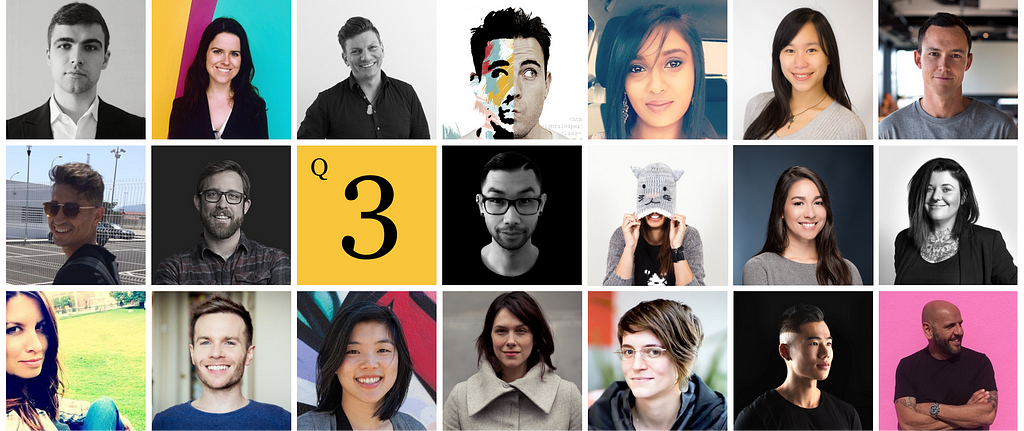
Learn From Twenty Experienced Designers
Intro Article: Get to know the designers
Question 1: How did you get into design?
Question 2: How your typical work day? (You’re here)
Question 3: (you’re here) What things you wish you knew when you started in design?
“I wish I’d known earlier what I had to learn late” (Richie Ashburn)

Australian 🇦🇺
Ever since I was a kid, I’ve always struggled with the idea of natural talent. I thought that I was the only one who lacked it because I was different from everybody else.
My head would scream:
– “You don’t have what it takes.”
– “You’re not talented, like…”
– “You’ve waited too long; you will never be as good as …”
– “You’re not like them. You don’t belong here.”
When I started out designing, this kind of self-loathing, imposter rhetoric magnified. I didn’t feel like a ‘real designer’ which made the work intimidating and me feel vulnerable.
Things got easier when I focussed on working hard, stretching myself outside of my comfort zone and looking for any and all types of feedback. Over time, I learned to trust myself better, and I’ve realised that natural talent isn’t a real thing — you rarely see the grit.
So trust yourself, because natural talent is bullshit. Worry less about other people’s success, and work harder on bringing and developing your best self. You are a real designer.
simonpan.com or on twitter

American 🇺🇸
The best design advice I’ve received was from my manager at Facebook, Charlie Sutton:
“Don’t try to solve everything, or you’ll end up with nothing”.
From that, I wish I understood earlier on that articulating the problem you’re solving, and principles are far more important than any hard design skill.
Problems are evergreen; tools and patterns are simply artefacts we shouldn’t be beholden to. The more senior you become, the harder it is to protect those core truths from the noise of expectations and responsibilities.
Sometimes it’s hard for people to break from solving problems using what we know, mostly because we take for granted that everything in the world was crafted from someone’s opinion too.
To my younger self I’d tell myself to remember that everything around us — from the products we use to our cultures — is designed and could be deconstructed and made better.
On Twitter

Formerly Product Design Manager at Google, Mountain View
Australian 🇦🇺
Don’t wait for permission. I wish I knew this much sooner.
Everyone is faking it, and everyone is waiting to be told “Good job”.
If you wait for some magic document to arrive in your inbox saying “Congratulations, you did it, well done! Everyone likes you! You succeeded!” You will be waiting forever.
Just proceed with the best intentions, unapologetically, at full speed, and don’t wait for anyone to tell you that you are on the right track.
You’re a trailblazer; they have to follow you. If you follow them, you end up walking in a circle as a group.
George Bernard Shaw said:
The reasonable person adapts themselves to the world: the unreasonable one persists in trying to adapt the world to themselves. Therefore all progress depends on the unreasonable person.
My website or on Medium

South African 🇿🇦
To my younger self: It’s tough now, but it gets better. It’s perfectly ok that you don’t understand everything just yet.
It’s ok that your colleagues know far more than you do.
It’s an opportunity to learn from them. Absorb as much as you can. It’s going to take time to hone your skills, and someday you will be confident in your work and yourself as a designer.
Best advice: Build a good relationship with your developers from the beginning.
Whatever company you work at, whatever team you are part of, wherever you are in the world, always have a strong relationship with your devs.
You need their tech skills as much as they need your design skills. Awesome things come out of collaboration.
My Linkedin

Australian 🇦🇺
Hindsight is an interesting thing. Most of us look back at mistakes we’ve made in the past and wish that we’d done things differently.
What we forget is that we may not have even made it to where we are today without making those mistakes. While we can’t undo our mistakes, we can learn from them.
If I could talk to my younger self, I would tell him to be confident and follow his passions.
Looking back, I wish I’d had a better idea of all the different job types out there. When I finished high school, I had no idea what sort of job would suit me. Luckily, I eventually ended up doing design in the tech space, but it would have been great to have been able to match my skills and passions to a particular career path early on.
I’d also tell my younger self to study less and practise more.
I spent quite a lot of time studying at university, but I acquired most of my core skills through practising my craft, whether it was talking to real clients, building websites, doing tutorials or just tinkering with code.
I think the best way to learn is through doing.
I’d encourage newbie designers to gain skills and experience by creating real products that solve actual problems. It’s also an excellent way to build up your design portfolio, which becomes your primary marketing tool to acquire new work.
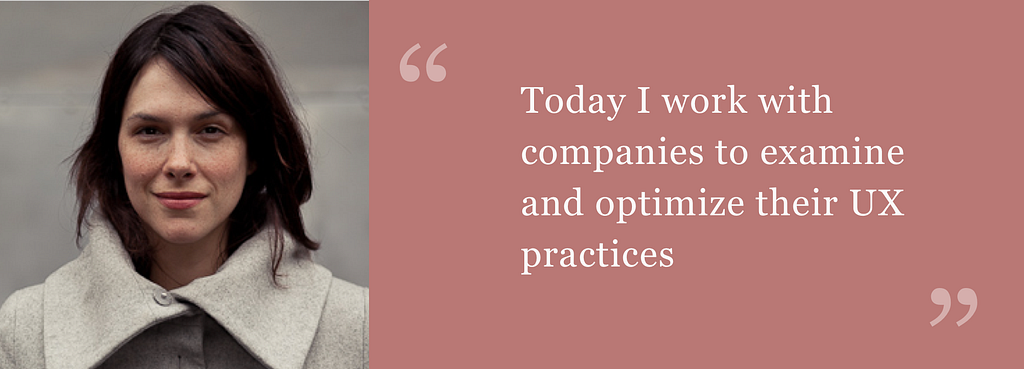
American 🇺🇸
Early in my career, a beloved coworker announced that he was leaving the agency we worked for to take another job.
I was crestfallen and confused. But we had so much fun!
There were foosball tables. Good coffee and snacks in the break room. Lots of time to chit chat and joke around.
His advice was that nobody will look out for your career for you, so it’s up to you to constantly monitor if your work environment is stable, healthy, and a worthy place to make your contributions.
He was alarmed by the amount of time we spent in expensive morale building exercises and how little time we spent on actual productive, billable work.
So he was looking out for his career and getting out. I didn’t get it at the time. A few months later I was laid off. And then I understood.

American 🇺🇸
The best possible thing you can do (and I wish I did more of) when you’re starting out is to identify talented people that you want to be like and do whatever it takes to work with them.
Even if you don’t land a proper “job” near them, offer to help for free, take them out for coffee, ask hard questions about their work. Repeat.
Ignore the ego that says you “should” work at a cooler place, or get paid more money, or be well known, or have a more senior role. That stuff will all work itself out, but the learning has to be the first priority.
The people I’ll be working with is still a huge factor when I’m considering a new job. Not the common “they have such a great team,” but instead who are the one or two particular people who I can teach me a tonne.
hugg.in or I’m @bhuggins on Twitter and Instagram

Australian 🇦🇺
Tips for people getting into the design industry:
My Linkedin

American 🇺🇸
Design and tech are ever-evolving, and I wish I’d spent more of my time early on getting out and speaking with more designers and design leaders.
Collectively, we hold a wealth of information that can’t be gleaned from reading a textbook, so the more we share, the faster we will grow as an industry and as individuals.
Seek out mentors and peers outside of your company or immediate circle who can help you gain a different perspective.
My Twitter
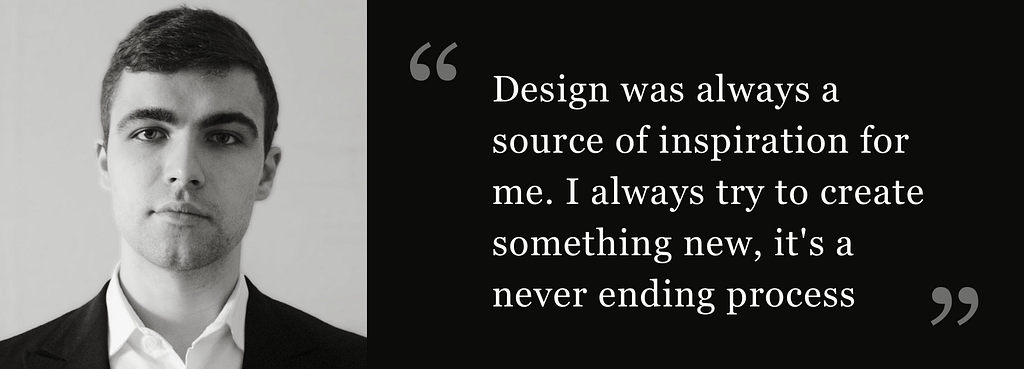
Russian 🇷🇺
It’s not exactly an advice, but the quote:
“Perfection is achieved, not when there is nothing more to add, but when there is nothing left to take away.”
I love it and think every designer should follow this because we should strive to find a balance in our designs.
The advice that I want to give to younger self:
“You aren’t your user.”
While this might sound simple, this advice is of vital importance for anyone who creates products. We create products for our users, not ourselves! And our design decisions should be deeply focused on user needs, wants and desires.

Nationality: Peruvian 🇵🇪
Being open to exploring different roles, industries, and companies have proven very helpful to me throughout my career.
For example, while working as a product manager, I interacted with many engineers who at some point or another would start asking me questions on software design.
As I looked into giving them answers, I slowly learned that I was fulfilling the role of a product designer. Soon, this became my most favourite part of the job.
Art and creativity have always been an important part of my life from childhood, but I’d never seen them as a viable career choice.
In discovering product design, I found I could have a career that incorporated my original passion for technology, the business acumen I learned in college, and the creative side I had left for my personal life.
That eureka moment as you discover your dream role isn’t so elusive, but it often requires a lot of hard work, willingness to try new things and to start over if necessary.
Sometimes it all starts with just asking: What part of your day do you enjoy the most? Now, is there a way to make that your full-time job? — then having the courage to follow through.
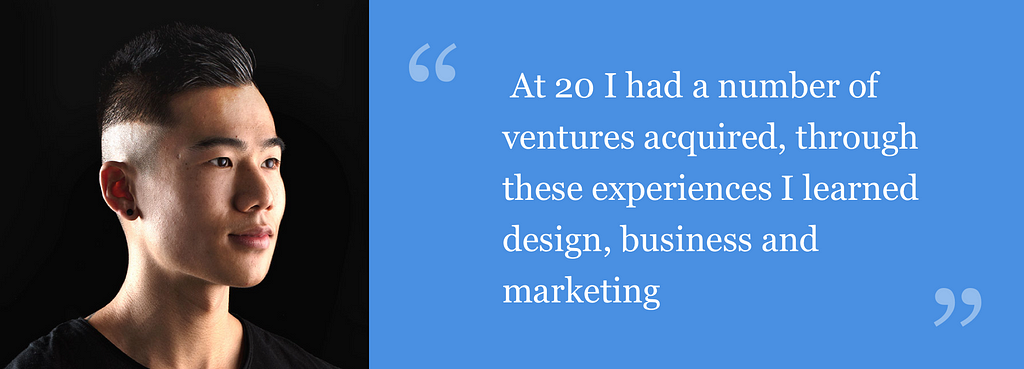
Australian 🇦🇺
It’s very rare to find someone who can design, market, build and also think about the business side of things when it comes to entrepreneurship.
To create successful products requires team collaboration. No matter how great you are, you will always do better work in a team environment.
With that said, I do wish I continued to push myself in the coding world. I was a 50/50 split of a designer and front-end developer but decided to focus all my attention on design, growth and business side of product development. If I was comfortable wrangling all the code, who knows what I’d be building.
The best advice I received would be the lessons I’ve learnt from building my side projects. Nothing beats first-hand experiences.
People can tell you things, but until you push yourself out there and take action, it’s just words. Yes, quotes are inspiring and motivational, but my advice to you would be, build that idea you’ve always had.
It’s not that hard. If you have an idea:
1. Buy a domain
2. Design your product
3. Put it out there and try to get traction
4. Set up a goal; Member count? Revenue?
5. Track your progress
Push yourself and see how far you can take your idea! When you put your mind to it, you’ll realise it’s not that hard. Don’t take it too seriously, have fun and enjoy the ride.
If you have any questions don’t hesitate to reach me on Twitter (@mizko) or on The Designership. I’d be more than happy to help you out.

Canadian 🇨🇦
I’m going to quote what David Droga recently said at the Cannes Lions Awards because it perfectly summarises this for me:
“Caring makes you want to work harder. People can’t pay you to care. People can’t teach you to care. But when you find something that you care about, you give it everything you’ve got. You never settle. And you are always pushing to learn and be better and support those around you.” All I’ve tried to do in my career is care.”
To be successful in this career, you have to care…and you have to care a lot. You have to care about the users, the experience, the client, the industry, your impact, the process, the results, the benefits, the obstacles, etc. There is so much to care about, but in the end — you have to care.
Even though there will be many people who will try to force you into caring less for a million reasons including budget, timeline, resources — under no circumstances can you compromise on caring.
The moment you become complacent is the moment you will no longer be the key translator between the user and the experience.
And equally as important is to find an employer who values that you care and don’t settle for any less.
My Linkedin

Italian 🇮🇹
The best advice I ever received that saved me so many times is:
“Don’t fall in love with your ideas”.
I also love a sentence from Tim Prestero:
“There are not stupid people, only stupid products.”
It is a very humbling vision that shifts the attention to whom we’re designing for.
My Linkedin
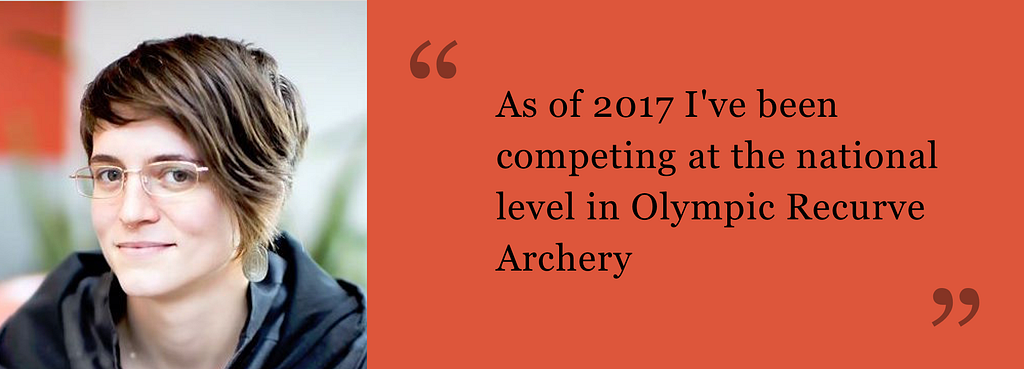
American 🇺🇸
Mentors, fellow designers, bosses and the many engineers I’ve worked with have taught me so much.
Here’s a few that I always go back to:
Treat your development like your most important design project.

British 🇬🇧 and recently Australian 🇦🇺
Slow down! The design/tech industry moves fast, so naturally, there’s a lot of stuff happening that makes you feel as though you’re falling behind the curve.
I’ve learned that the most important thing when I’m feeling this way is to slow down and re-focus on my craft… to stay inspired, passionate and conceptual.
No matter what new trend or technology is making headlines, being a good designer is the most useful thing to my professional development.
That’s my advice to anyone getting into the industry to — don’t try to wear too many hats. Sure, it’s important to be informed and intrigued, but it’ll serve you well in the long term to master being a great designer and thinker first.
It may end up taking your entire career to perfect.
My work at buzzusborne.com, my Twitter, my writing on Medium and my resume on Linkedin

Australian 🇦🇺
I’ve learnt many lessons in my relatively short time as a designer, but my top pieces of advice to my younger designer self would be to:
My Twitter and also on my Dribbble for haphazardly timed insights into my work.

British 🇬🇧
“It’s better to say no then yes than yes then no”.
I wish I didn’t have to work that out for myself. When I was fresh to the industry, working at a big corporate, I found it hard not to want to do it all, and to do my best. That often led me to work overtime with high expectations from others.
There’s nothing wrong with that, but you don’t get paid anymore for working more hours — if you want to do more work, make sure it’s on your stuff, and collaborate outside of work.
Some people want to climb the corporate ladder, some want to chill, and others have their side hustle.
Only take advice from the ones who’ve already done or are doing what you want to do. It doesn’t make sense to listen to your manager about building a startup if they haven’t done it.
To my younger self, I would say don’t listen to your parents because they just want you to be safe — which holds you back.
Take risks.
My Twitter

Taiwanese 🇹🇼
My advice would be “to learn as much programming as you can”.
I started to teach myself front-end development since college by reading books and hand-coding my portfolio site.
Although I’ve gone pretty far as a “designer”, I still wish I could approach programming more consistently and systematically.
This is not only for having a better resume/portfolio, but for truly understanding technical requirements and building “working” prototypes when it comes to designing complex products or systems.
There are many online resources these days teaching people how to code.
I recommend FreeCodeCamp, which goes beyond an online course.
Once signing up, you will be exposed to the largest student community in the world (1M+) and get inspired by many predecessors sharing their experience on its Medium publication.
This is crucial for people who are the lone learners in their social circle to get coding support and mental encouragement.
FreeCodeCamp
FreeCodeCamp Medium publication
My Medium
Read the other articles in this series
Intro Article: Get to know the designers
Question 1: How did you get into design?
Question 2: How your typical work day? (You’re here)
Question 3: (you’re here) What things you wish you knew when you started in design?
Question 4: Coming next week
Clap 👏 👏 👏 if you enjoyed this article, so others can find it
Comment 💬 if you have a question you’d like to ask the designers
Follow me Guy Ligertwood to read all the articles in the series
Question 3: What Things You Wish You Knew When You Started in Design? was originally published in UX Planet on Medium, where people are continuing the conversation by highlighting and responding to this story.
AI-driven updates, curated by humans and hand-edited for the Prototypr community